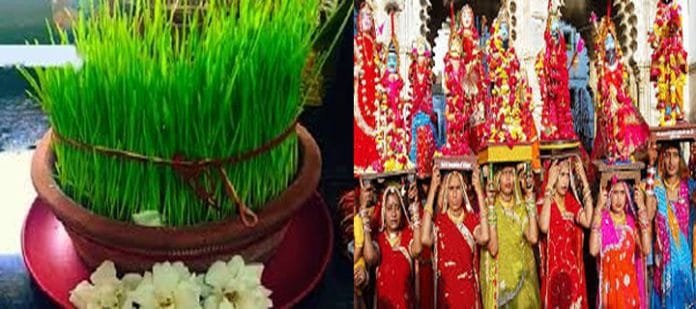INVC NEWS
Haridwar : The Navratri festival is considered very important in Sanatan Dharma. Be it Shardiya Navratri or Chaitra Navratri, Goddess Bhagwati Durga is worshiped as per the rituals. Navratri is celebrated with great pomp in the historical temples of Chhattisgarh. Among the major Shaktipeeths of Chhattisgarh, Ratanpur, Chandrapur, Dongargarh, Khallari and Dantewada are prominent. Mahamaya is present in Ratanpur, Chandraseni in Chandrapur, Bamleshwari in Dongargarh and Danteshwari Devi is present in Dantewada. Chaitra Navratri is starting from today i.e. 9th April and Goddess Bhagwati will be worshiped till 17th April.
Akhand Jyot (Akhand Jyot) is lit in Devi temples. The tradition of sowing sorghum has also been going on for centuries. Jawar is sown on the day of Ghatasthapana in Navratri. The tradition of sowing Jawar during Navratri has been going on for centuries. It is believed that without Jawara, the worship of Mother Adishakti Durga is considered incomplete. According to the beliefs of Sanatan Dharma, there are many indications from the sowing of jawara and its colour, green jawara is a symbol of prosperity. White barley symbolizes ritual accomplishment.
Jawara immersion takes place on the tenth day, this has also been described in the scriptures. When our favorite Gods and Goddesses are pleased then they fulfill our wishes. Just like Lord Krishna likes Makhan Mishri, Lord Ganesha likes Modak and Durva, similarly Goddess Durga Mata likes nature very much.
Nature itself is called mother. Nature means greenery in every way. That is why, along with the installation of Jyot, Jawara is also sown in every Devi temple during Navratri festival. This Jawara is the seven grains which are sown with rituals on Navratri. They keep waving in front of Goddess Durga for nine days. Durga Mata likes this very much. In rural areas, Jawara is immersed with great pomp on the ninth and tenth days.
















